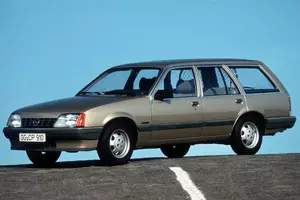
| Vehicle | Curb weight | Difference from world's smallest | Weight to power ratio | 0—60 mph acceleration ratio | Consumption ratio |
|---|---|---|---|---|---|
| 2.3 D |
1260 kg / 2778 lbs |
835 kg (1841 lbs) heavier | 18 kg to 1 hp | 62 kg/s (137 lbs/s) |
183 kg/L (404 lbs/L) |
| 2.0 S |
1180 kg / 2602 lbs |
755 kg (1665 lbs) heavier | 12 kg to 1 hp | 83 kg/s (183 lbs/s) |
91 kg/L (201 lbs/L) |
| 1.8 S |
1125 kg / 2481 lbs |
700 kg (1544 lbs) heavier | 13 kg to 1 hp | 79 kg/s (174 lbs/s) |
134 kg/L (295 lbs/L) |
| 2.0 E |
1150 kg / 2536 lbs |
725 kg (1599 lbs) heavier | 10 kg to 1 hp | 93 kg/s (205 lbs/s) |
129 kg/L (284 lbs/L) |
| 2.2i |
1205 kg / 2657 lbs |
780 kg (1720 lbs) heavier | 10 kg to 1 hp | 115 kg/s (254 lbs/s) |
130 kg/L (287 lbs/L) |
| 1.8 E |
1155 kg / 2547 lbs |
730 kg (1610 lbs) heavier | 12 kg to 1 hp | 87 kg/s (192 lbs/s) |
136 kg/L (300 lbs/L) |
| 1.8 |
1125 kg / 2481 lbs |
700 kg (1544 lbs) heavier | 15 kg to 1 hp | 68 kg/s (150 lbs/s) |
116 kg/L (256 lbs/L) |
| 2.2 TD |
1270 kg / 2800 lbs |
845 kg (1863 lbs) heavier | 15 kg to 1 hp | 84 kg/s (185 lbs/s) |
157 kg/L (346 lbs/L) |
| Vehicle | 2.3 D |
|---|---|
| Curb weight |
1260 kg / 2778 lbs |
| Difference from world's smallest | 835 kg (835 lbs) heavier |
| Weight to power ratio | 18 kg to 1 hp |
| 0—60 mph acceleration ratio | 62 kg/s (137 lbs/s) |
| Consumption ratio |
183 kg/L (404 lbs/L) |
| Vehicle | 2.0 S |
| Curb weight |
1180 kg / 2602 lbs |
| Difference from world's smallest | 755 kg (755 lbs) heavier |
| Weight to power ratio | 12 kg to 1 hp |
| 0—60 mph acceleration ratio | 83 kg/s (183 lbs/s) |
| Consumption ratio |
91 kg/L (201 lbs/L) |
| Vehicle | 1.8 S |
| Curb weight |
1125 kg / 2481 lbs |
| Difference from world's smallest | 700 kg (700 lbs) heavier |
| Weight to power ratio | 13 kg to 1 hp |
| 0—60 mph acceleration ratio | 79 kg/s (174 lbs/s) |
| Consumption ratio |
134 kg/L (295 lbs/L) |
| Vehicle | 2.0 E |
| Curb weight |
1150 kg / 2536 lbs |
| Difference from world's smallest | 725 kg (725 lbs) heavier |
| Weight to power ratio | 10 kg to 1 hp |
| 0—60 mph acceleration ratio | 93 kg/s (205 lbs/s) |
| Consumption ratio |
129 kg/L (284 lbs/L) |
| Vehicle | 2.2i |
| Curb weight |
1205 kg / 2657 lbs |
| Difference from world's smallest | 780 kg (780 lbs) heavier |
| Weight to power ratio | 10 kg to 1 hp |
| 0—60 mph acceleration ratio | 115 kg/s (254 lbs/s) |
| Consumption ratio |
130 kg/L (287 lbs/L) |
| Vehicle | 1.8 E |
| Curb weight |
1155 kg / 2547 lbs |
| Difference from world's smallest | 730 kg (730 lbs) heavier |
| Weight to power ratio | 12 kg to 1 hp |
| 0—60 mph acceleration ratio | 87 kg/s (192 lbs/s) |
| Consumption ratio |
136 kg/L (300 lbs/L) |
| Vehicle | 1.8 |
| Curb weight |
1125 kg / 2481 lbs |
| Difference from world's smallest | 700 kg (700 lbs) heavier |
| Weight to power ratio | 15 kg to 1 hp |
| 0—60 mph acceleration ratio | 68 kg/s (150 lbs/s) |
| Consumption ratio |
116 kg/L (256 lbs/L) |
| Vehicle | 2.2 TD |
| Curb weight |
1270 kg / 2800 lbs |
| Difference from world's smallest | 845 kg (845 lbs) heavier |
| Weight to power ratio | 15 kg to 1 hp |
| 0—60 mph acceleration ratio | 84 kg/s (185 lbs/s) |
| Consumption ratio |
157 kg/L (346 lbs/L) |
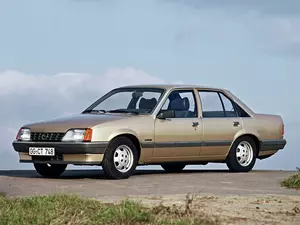
| Vehicle | Curb weight | Difference from world's smallest | Weight to power ratio | 0—60 mph acceleration ratio | Consumption ratio |
|---|---|---|---|---|---|
| 2.2 E |
1125 kg / 2481 lbs |
700 kg (1544 lbs) heavier | 10 kg to 1 hp | 113 kg/s (249 lbs/s) |
136 kg/L (300 lbs/L) |
| 2.3 D |
1250 kg / 2756 lbs |
825 kg (1819 lbs) heavier | 19 kg to 1 hp | 58 kg/s (128 lbs/s) |
184 kg/L (406 lbs/L) |
| 2.0 S |
1135 kg / 2503 lbs |
710 kg (1566 lbs) heavier | 11 kg to 1 hp | 95 kg/s (209 lbs/s) |
132 kg/L (291 lbs/L) |
| 2.0 E |
1135 kg / 2503 lbs |
710 kg (1566 lbs) heavier | 10 kg to 1 hp | 100 kg/s (221 lbs/s) |
132 kg/L (291 lbs/L) |
| 1.8 S |
1115 kg / 2459 lbs |
690 kg (1522 lbs) heavier | 12 kg to 1 hp | 84 kg/s (185 lbs/s) |
138 kg/L (304 lbs/L) |
| 2.2 D |
1235 kg / 2723 lbs |
810 kg (1786 lbs) heavier | 17 kg to 1 hp | 65 kg/s (143 lbs/s) |
184 kg/L (406 lbs/L) |
| 1.8i CAT |
1120 kg / 2470 lbs |
695 kg (1533 lbs) heavier | 11 kg to 1 hp | 90 kg/s (198 lbs/s) |
124 kg/L (273 lbs/L) |
| 1.8 |
1115 kg / 2459 lbs |
690 kg (1522 lbs) heavier | 15 kg to 1 hp | 71 kg/s (157 lbs/s) |
121 kg/L (267 lbs/L) |
| 2.3 TD |
1245 kg / 2745 lbs |
820 kg (1808 lbs) heavier | 14 kg to 1 hp | 87 kg/s (192 lbs/s) |
180 kg/L (397 lbs/L) |
| Vehicle | 2.2 E |
|---|---|
| Curb weight |
1125 kg / 2481 lbs |
| Difference from world's smallest | 700 kg (700 lbs) heavier |
| Weight to power ratio | 10 kg to 1 hp |
| 0—60 mph acceleration ratio | 113 kg/s (249 lbs/s) |
| Consumption ratio |
136 kg/L (300 lbs/L) |
| Vehicle | 2.3 D |
| Curb weight |
1250 kg / 2756 lbs |
| Difference from world's smallest | 825 kg (825 lbs) heavier |
| Weight to power ratio | 19 kg to 1 hp |
| 0—60 mph acceleration ratio | 58 kg/s (128 lbs/s) |
| Consumption ratio |
184 kg/L (406 lbs/L) |
| Vehicle | 2.0 S |
| Curb weight |
1135 kg / 2503 lbs |
| Difference from world's smallest | 710 kg (710 lbs) heavier |
| Weight to power ratio | 11 kg to 1 hp |
| 0—60 mph acceleration ratio | 95 kg/s (209 lbs/s) |
| Consumption ratio |
132 kg/L (291 lbs/L) |
| Vehicle | 2.0 E |
| Curb weight |
1135 kg / 2503 lbs |
| Difference from world's smallest | 710 kg (710 lbs) heavier |
| Weight to power ratio | 10 kg to 1 hp |
| 0—60 mph acceleration ratio | 100 kg/s (221 lbs/s) |
| Consumption ratio |
132 kg/L (291 lbs/L) |
| Vehicle | 1.8 S |
| Curb weight |
1115 kg / 2459 lbs |
| Difference from world's smallest | 690 kg (690 lbs) heavier |
| Weight to power ratio | 12 kg to 1 hp |
| 0—60 mph acceleration ratio | 84 kg/s (185 lbs/s) |
| Consumption ratio |
138 kg/L (304 lbs/L) |
| Vehicle | 2.2 D |
| Curb weight |
1235 kg / 2723 lbs |
| Difference from world's smallest | 810 kg (810 lbs) heavier |
| Weight to power ratio | 17 kg to 1 hp |
| 0—60 mph acceleration ratio | 65 kg/s (143 lbs/s) |
| Consumption ratio |
184 kg/L (406 lbs/L) |
| Vehicle | 1.8i CAT |
| Curb weight |
1120 kg / 2470 lbs |
| Difference from world's smallest | 695 kg (695 lbs) heavier |
| Weight to power ratio | 11 kg to 1 hp |
| 0—60 mph acceleration ratio | 90 kg/s (198 lbs/s) |
| Consumption ratio |
124 kg/L (273 lbs/L) |
| Vehicle | 1.8 |
| Curb weight |
1115 kg / 2459 lbs |
| Difference from world's smallest | 690 kg (690 lbs) heavier |
| Weight to power ratio | 15 kg to 1 hp |
| 0—60 mph acceleration ratio | 71 kg/s (157 lbs/s) |
| Consumption ratio |
121 kg/L (267 lbs/L) |
| Vehicle | 2.3 TD |
| Curb weight |
1245 kg / 2745 lbs |
| Difference from world's smallest | 820 kg (820 lbs) heavier |
| Weight to power ratio | 14 kg to 1 hp |
| 0—60 mph acceleration ratio | 87 kg/s (192 lbs/s) |
| Consumption ratio |
180 kg/L (397 lbs/L) |
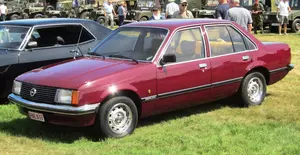
| Vehicle | Curb weight | Difference from world's smallest | Weight to power ratio | 0—60 mph acceleration ratio | Consumption ratio |
|---|---|---|---|---|---|
| 2.0 E |
1100 kg / 2426 lbs |
675 kg (1489 lbs) heavier | 10 kg to 1 hp | 96 kg/s (212 lbs/s) |
116 kg/L (256 lbs/L) |
| 2.0 S |
1100 kg / 2426 lbs |
675 kg (1489 lbs) heavier | 11 kg to 1 hp | 92 kg/s (203 lbs/s) |
120 kg/L (265 lbs/L) |
| 2.1 D |
1235 kg / 2723 lbs |
810 kg (1786 lbs) heavier | 21 kg to 1 hp | 55 kg/s (121 lbs/s) |
156 kg/L (344 lbs/L) |
| 1.9 |
1100 kg / 2426 lbs |
675 kg (1489 lbs) heavier | 15 kg to 1 hp | 72 kg/s (159 lbs/s) |
111 kg/L (245 lbs/L) |
| 2.0 |
1100 kg / 2426 lbs |
675 kg (1489 lbs) heavier | 12 kg to 1 hp | 83 kg/s (183 lbs/s) |
106 kg/L (234 lbs/L) |
| 1.7 |
1100 kg / 2426 lbs |
675 kg (1489 lbs) heavier | 18 kg to 1 hp | 56 kg/s (123 lbs/s) |
111 kg/L (245 lbs/L) |
| 2.3 D |
1235 kg / 2723 lbs |
810 kg (1786 lbs) heavier | 19 kg to 1 hp | 59 kg/s (130 lbs/s) |
149 kg/L (329 lbs/L) |
| Vehicle | 2.0 E |
|---|---|
| Curb weight |
1100 kg / 2426 lbs |
| Difference from world's smallest | 675 kg (675 lbs) heavier |
| Weight to power ratio | 10 kg to 1 hp |
| 0—60 mph acceleration ratio | 96 kg/s (212 lbs/s) |
| Consumption ratio |
116 kg/L (256 lbs/L) |
| Vehicle | 2.0 S |
| Curb weight |
1100 kg / 2426 lbs |
| Difference from world's smallest | 675 kg (675 lbs) heavier |
| Weight to power ratio | 11 kg to 1 hp |
| 0—60 mph acceleration ratio | 92 kg/s (203 lbs/s) |
| Consumption ratio |
120 kg/L (265 lbs/L) |
| Vehicle | 2.1 D |
| Curb weight |
1235 kg / 2723 lbs |
| Difference from world's smallest | 810 kg (810 lbs) heavier |
| Weight to power ratio | 21 kg to 1 hp |
| 0—60 mph acceleration ratio | 55 kg/s (121 lbs/s) |
| Consumption ratio |
156 kg/L (344 lbs/L) |
| Vehicle | 1.9 |
| Curb weight |
1100 kg / 2426 lbs |
| Difference from world's smallest | 675 kg (675 lbs) heavier |
| Weight to power ratio | 15 kg to 1 hp |
| 0—60 mph acceleration ratio | 72 kg/s (159 lbs/s) |
| Consumption ratio |
111 kg/L (245 lbs/L) |
| Vehicle | 2.0 |
| Curb weight |
1100 kg / 2426 lbs |
| Difference from world's smallest | 675 kg (675 lbs) heavier |
| Weight to power ratio | 12 kg to 1 hp |
| 0—60 mph acceleration ratio | 83 kg/s (183 lbs/s) |
| Consumption ratio |
106 kg/L (234 lbs/L) |
| Vehicle | 1.7 |
| Curb weight |
1100 kg / 2426 lbs |
| Difference from world's smallest | 675 kg (675 lbs) heavier |
| Weight to power ratio | 18 kg to 1 hp |
| 0—60 mph acceleration ratio | 56 kg/s (123 lbs/s) |
| Consumption ratio |
111 kg/L (245 lbs/L) |
| Vehicle | 2.3 D |
| Curb weight |
1235 kg / 2723 lbs |
| Difference from world's smallest | 810 kg (810 lbs) heavier |
| Weight to power ratio | 19 kg to 1 hp |
| 0—60 mph acceleration ratio | 59 kg/s (130 lbs/s) |
| Consumption ratio |
149 kg/L (329 lbs/L) |

| Vehicle | Curb weight | Difference from world's smallest | Weight to power ratio | 0—60 mph acceleration ratio | Consumption ratio |
|---|---|---|---|---|---|
| 2.0 S |
1145 kg / 2525 lbs |
720 kg (1588 lbs) heavier | 11 kg to 1 hp | 89 kg/s (196 lbs/s) |
123 kg/L (271 lbs/L) |
| 2.1 D |
1270 kg / 2800 lbs |
845 kg (1863 lbs) heavier | 21 kg to 1 hp | - |
157 kg/L (346 lbs/L) |
| 1.9 |
1145 kg / 2525 lbs |
720 kg (1588 lbs) heavier | 15 kg to 1 hp | 65 kg/s (143 lbs/s) |
116 kg/L (256 lbs/L) |
| 2.0 E |
1145 kg / 2525 lbs |
720 kg (1588 lbs) heavier | 10 kg to 1 hp | 92 kg/s (203 lbs/s) |
123 kg/L (271 lbs/L) |
| 2.3 D |
1270 kg / 2800 lbs |
845 kg (1863 lbs) heavier | 20 kg to 1 hp | 53 kg/s (117 lbs/s) |
149 kg/L (329 lbs/L) |
| 2.0 |
1145 kg / 2525 lbs |
720 kg (1588 lbs) heavier | 13 kg to 1 hp | 80 kg/s (176 lbs/s) |
110 kg/L (243 lbs/L) |
| 1.7 |
1145 kg / 2525 lbs |
720 kg (1588 lbs) heavier | 19 kg to 1 hp | 56 kg/s (123 lbs/s) |
107 kg/L (236 lbs/L) |
| Vehicle | 2.0 S |
|---|---|
| Curb weight |
1145 kg / 2525 lbs |
| Difference from world's smallest | 720 kg (720 lbs) heavier |
| Weight to power ratio | 11 kg to 1 hp |
| 0—60 mph acceleration ratio | 89 kg/s (196 lbs/s) |
| Consumption ratio |
123 kg/L (271 lbs/L) |
| Vehicle | 2.1 D |
| Curb weight |
1270 kg / 2800 lbs |
| Difference from world's smallest | 845 kg (845 lbs) heavier |
| Weight to power ratio | 21 kg to 1 hp |
| 0—60 mph acceleration ratio | - |
| Consumption ratio |
157 kg/L (346 lbs/L) |
| Vehicle | 1.9 |
| Curb weight |
1145 kg / 2525 lbs |
| Difference from world's smallest | 720 kg (720 lbs) heavier |
| Weight to power ratio | 15 kg to 1 hp |
| 0—60 mph acceleration ratio | 65 kg/s (143 lbs/s) |
| Consumption ratio |
116 kg/L (256 lbs/L) |
| Vehicle | 2.0 E |
| Curb weight |
1145 kg / 2525 lbs |
| Difference from world's smallest | 720 kg (720 lbs) heavier |
| Weight to power ratio | 10 kg to 1 hp |
| 0—60 mph acceleration ratio | 92 kg/s (203 lbs/s) |
| Consumption ratio |
123 kg/L (271 lbs/L) |
| Vehicle | 2.3 D |
| Curb weight |
1270 kg / 2800 lbs |
| Difference from world's smallest | 845 kg (845 lbs) heavier |
| Weight to power ratio | 20 kg to 1 hp |
| 0—60 mph acceleration ratio | 53 kg/s (117 lbs/s) |
| Consumption ratio |
149 kg/L (329 lbs/L) |
| Vehicle | 2.0 |
| Curb weight |
1145 kg / 2525 lbs |
| Difference from world's smallest | 720 kg (720 lbs) heavier |
| Weight to power ratio | 13 kg to 1 hp |
| 0—60 mph acceleration ratio | 80 kg/s (176 lbs/s) |
| Consumption ratio |
110 kg/L (243 lbs/L) |
| Vehicle | 1.7 |
| Curb weight |
1145 kg / 2525 lbs |
| Difference from world's smallest | 720 kg (720 lbs) heavier |
| Weight to power ratio | 19 kg to 1 hp |
| 0—60 mph acceleration ratio | 56 kg/s (123 lbs/s) |
| Consumption ratio |
107 kg/L (236 lbs/L) |
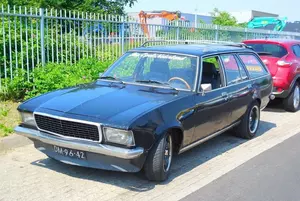
| Vehicle | Curb weight | Difference from world's smallest | Weight to power ratio | 0—60 mph acceleration ratio | Consumption ratio |
|---|---|---|---|---|---|
| 1.7 |
1110 kg / 2448 lbs |
685 kg (1511 lbs) heavier | 17 kg to 1 hp | 53 kg/s (117 lbs/s) |
100 kg/L (221 lbs/L) |
| 1.9 |
1140 kg / 2514 lbs |
715 kg (1577 lbs) heavier | 13 kg to 1 hp | 80 kg/s (176 lbs/s) |
97 kg/L (214 lbs/L) |
| 1.7 S |
1110 kg / 2448 lbs |
685 kg (1511 lbs) heavier | 13 kg to 1 hp | 53 kg/s (117 lbs/s) |
103 kg/L (227 lbs/L) |
| 1.9 S |
1110 kg / 2448 lbs |
685 kg (1511 lbs) heavier | 11 kg to 1 hp | 78 kg/s (172 lbs/s) |
94 kg/L (207 lbs/L) |
| 2.0 D |
1255 kg / 2767 lbs |
830 kg (1830 lbs) heavier | 23 kg to 1 hp | - |
155 kg/L (342 lbs/L) |
| 2.1 D |
1255 kg / 2767 lbs |
830 kg (1830 lbs) heavier | 21 kg to 1 hp | 48 kg/s (106 lbs/s) |
153 kg/L (337 lbs/L) |
| 2.0 S |
1140 kg / 2514 lbs |
715 kg (1577 lbs) heavier | 11 kg to 1 hp | 92 kg/s (203 lbs/s) |
98 kg/L (216 lbs/L) |
| Vehicle | 1.7 |
|---|---|
| Curb weight |
1110 kg / 2448 lbs |
| Difference from world's smallest | 685 kg (685 lbs) heavier |
| Weight to power ratio | 17 kg to 1 hp |
| 0—60 mph acceleration ratio | 53 kg/s (117 lbs/s) |
| Consumption ratio |
100 kg/L (221 lbs/L) |
| Vehicle | 1.9 |
| Curb weight |
1140 kg / 2514 lbs |
| Difference from world's smallest | 715 kg (715 lbs) heavier |
| Weight to power ratio | 13 kg to 1 hp |
| 0—60 mph acceleration ratio | 80 kg/s (176 lbs/s) |
| Consumption ratio |
97 kg/L (214 lbs/L) |
| Vehicle | 1.7 S |
| Curb weight |
1110 kg / 2448 lbs |
| Difference from world's smallest | 685 kg (685 lbs) heavier |
| Weight to power ratio | 13 kg to 1 hp |
| 0—60 mph acceleration ratio | 53 kg/s (117 lbs/s) |
| Consumption ratio |
103 kg/L (227 lbs/L) |
| Vehicle | 1.9 S |
| Curb weight |
1110 kg / 2448 lbs |
| Difference from world's smallest | 685 kg (685 lbs) heavier |
| Weight to power ratio | 11 kg to 1 hp |
| 0—60 mph acceleration ratio | 78 kg/s (172 lbs/s) |
| Consumption ratio |
94 kg/L (207 lbs/L) |
| Vehicle | 2.0 D |
| Curb weight |
1255 kg / 2767 lbs |
| Difference from world's smallest | 830 kg (830 lbs) heavier |
| Weight to power ratio | 23 kg to 1 hp |
| 0—60 mph acceleration ratio | - |
| Consumption ratio |
155 kg/L (342 lbs/L) |
| Vehicle | 2.1 D |
| Curb weight |
1255 kg / 2767 lbs |
| Difference from world's smallest | 830 kg (830 lbs) heavier |
| Weight to power ratio | 21 kg to 1 hp |
| 0—60 mph acceleration ratio | 48 kg/s (106 lbs/s) |
| Consumption ratio |
153 kg/L (337 lbs/L) |
| Vehicle | 2.0 S |
| Curb weight |
1140 kg / 2514 lbs |
| Difference from world's smallest | 715 kg (715 lbs) heavier |
| Weight to power ratio | 11 kg to 1 hp |
| 0—60 mph acceleration ratio | 92 kg/s (203 lbs/s) |
| Consumption ratio |
98 kg/L (216 lbs/L) |
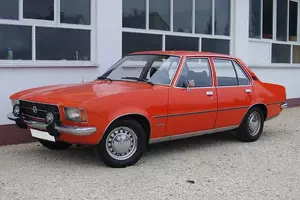
| Vehicle | Curb weight | Difference from world's smallest | Weight to power ratio | 0—60 mph acceleration ratio | Consumption ratio |
|---|---|---|---|---|---|
| 1.7 |
1065 kg / 2348 lbs |
640 kg (1411 lbs) heavier | 16 kg to 1 hp | 56 kg/s (123 lbs/s) |
103 kg/L (227 lbs/L) |
| 1.9 |
1095 kg / 2414 lbs |
670 kg (1477 lbs) heavier | 12 kg to 1 hp | 82 kg/s (181 lbs/s) |
95 kg/L (209 lbs/L) |
| 1.7 S |
1065 kg / 2348 lbs |
640 kg (1411 lbs) heavier | 13 kg to 1 hp | 68 kg/s (150 lbs/s) |
100 kg/L (221 lbs/L) |
| 2.0 |
1095 kg / 2414 lbs |
670 kg (1477 lbs) heavier | 11 kg to 1 hp | 88 kg/s (194 lbs/s) |
96 kg/L (212 lbs/L) |
| 1.9 S |
1065 kg / 2348 lbs |
640 kg (1411 lbs) heavier | 11 kg to 1 hp | 80 kg/s (176 lbs/s) |
92 kg/L (203 lbs/L) |
| 2.0 D |
1210 kg / 2668 lbs |
785 kg (1731 lbs) heavier | 22 kg to 1 hp | - |
153 kg/L (337 lbs/L) |
| 2.1 D |
1210 kg / 2668 lbs |
785 kg (1731 lbs) heavier | 20 kg to 1 hp | 54 kg/s (119 lbs/s) |
151 kg/L (333 lbs/L) |
| Vehicle | 1.7 |
|---|---|
| Curb weight |
1065 kg / 2348 lbs |
| Difference from world's smallest | 640 kg (640 lbs) heavier |
| Weight to power ratio | 16 kg to 1 hp |
| 0—60 mph acceleration ratio | 56 kg/s (123 lbs/s) |
| Consumption ratio |
103 kg/L (227 lbs/L) |
| Vehicle | 1.9 |
| Curb weight |
1095 kg / 2414 lbs |
| Difference from world's smallest | 670 kg (670 lbs) heavier |
| Weight to power ratio | 12 kg to 1 hp |
| 0—60 mph acceleration ratio | 82 kg/s (181 lbs/s) |
| Consumption ratio |
95 kg/L (209 lbs/L) |
| Vehicle | 1.7 S |
| Curb weight |
1065 kg / 2348 lbs |
| Difference from world's smallest | 640 kg (640 lbs) heavier |
| Weight to power ratio | 13 kg to 1 hp |
| 0—60 mph acceleration ratio | 68 kg/s (150 lbs/s) |
| Consumption ratio |
100 kg/L (221 lbs/L) |
| Vehicle | 2.0 |
| Curb weight |
1095 kg / 2414 lbs |
| Difference from world's smallest | 670 kg (670 lbs) heavier |
| Weight to power ratio | 11 kg to 1 hp |
| 0—60 mph acceleration ratio | 88 kg/s (194 lbs/s) |
| Consumption ratio |
96 kg/L (212 lbs/L) |
| Vehicle | 1.9 S |
| Curb weight |
1065 kg / 2348 lbs |
| Difference from world's smallest | 640 kg (640 lbs) heavier |
| Weight to power ratio | 11 kg to 1 hp |
| 0—60 mph acceleration ratio | 80 kg/s (176 lbs/s) |
| Consumption ratio |
92 kg/L (203 lbs/L) |
| Vehicle | 2.0 D |
| Curb weight |
1210 kg / 2668 lbs |
| Difference from world's smallest | 785 kg (785 lbs) heavier |
| Weight to power ratio | 22 kg to 1 hp |
| 0—60 mph acceleration ratio | - |
| Consumption ratio |
153 kg/L (337 lbs/L) |
| Vehicle | 2.1 D |
| Curb weight |
1210 kg / 2668 lbs |
| Difference from world's smallest | 785 kg (785 lbs) heavier |
| Weight to power ratio | 20 kg to 1 hp |
| 0—60 mph acceleration ratio | 54 kg/s (119 lbs/s) |
| Consumption ratio |
151 kg/L (333 lbs/L) |
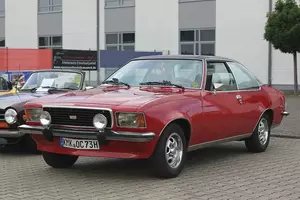
| Vehicle | Curb weight | Difference from world's smallest | Weight to power ratio | 0—60 mph acceleration ratio | Consumption ratio |
|---|---|---|---|---|---|
| 1.7 S |
1080 kg / 2381 lbs |
655 kg (1444 lbs) heavier | 13 kg to 1 hp | 69 kg/s (152 lbs/s) |
86 kg/L (190 lbs/L) |
| 1.9 |
1110 kg / 2448 lbs |
685 kg (1511 lbs) heavier | 12 kg to 1 hp | 83 kg/s (183 lbs/s) |
95 kg/L (209 lbs/L) |
| 2.0 |
1195 kg / 2635 lbs |
770 kg (1698 lbs) heavier | 12 kg to 1 hp | 117 kg/s (258 lbs/s) |
139 kg/L (306 lbs/L) |
| 1.9 S |
1080 kg / 2381 lbs |
655 kg (1444 lbs) heavier | 11 kg to 1 hp | 81 kg/s (179 lbs/s) |
92 kg/L (203 lbs/L) |
| Vehicle | 1.7 S |
|---|---|
| Curb weight |
1080 kg / 2381 lbs |
| Difference from world's smallest | 655 kg (655 lbs) heavier |
| Weight to power ratio | 13 kg to 1 hp |
| 0—60 mph acceleration ratio | 69 kg/s (152 lbs/s) |
| Consumption ratio |
86 kg/L (190 lbs/L) |
| Vehicle | 1.9 |
| Curb weight |
1110 kg / 2448 lbs |
| Difference from world's smallest | 685 kg (685 lbs) heavier |
| Weight to power ratio | 12 kg to 1 hp |
| 0—60 mph acceleration ratio | 83 kg/s (183 lbs/s) |
| Consumption ratio |
95 kg/L (209 lbs/L) |
| Vehicle | 2.0 |
| Curb weight |
1195 kg / 2635 lbs |
| Difference from world's smallest | 770 kg (770 lbs) heavier |
| Weight to power ratio | 12 kg to 1 hp |
| 0—60 mph acceleration ratio | 117 kg/s (258 lbs/s) |
| Consumption ratio |
139 kg/L (306 lbs/L) |
| Vehicle | 1.9 S |
| Curb weight |
1080 kg / 2381 lbs |
| Difference from world's smallest | 655 kg (655 lbs) heavier |
| Weight to power ratio | 11 kg to 1 hp |
| 0—60 mph acceleration ratio | 81 kg/s (179 lbs/s) |
| Consumption ratio |
92 kg/L (203 lbs/L) |